

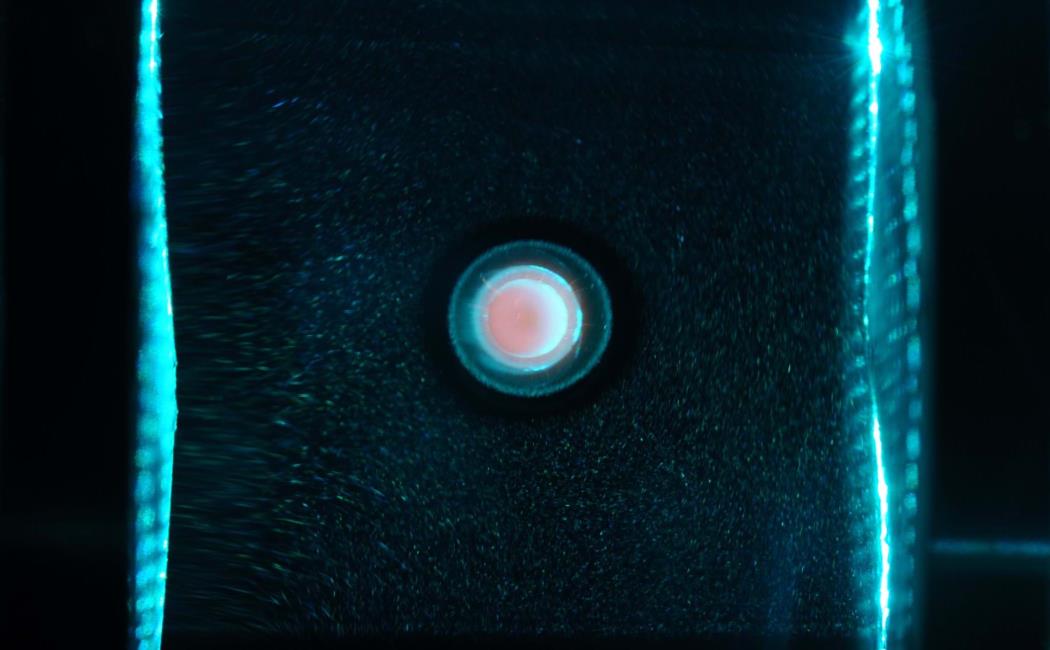
21 September, 2017
When an electric field is applied to hydrocarbon flames, ionic wind is generated. While this has been shown to influence soot emission, propagation speed, and the stability of flames, not much is known about the behaviour of ionic wind and how it affects flames.
Now, researchers at King Abdullah University of Science and Technology (KAUST), Saudi Arabia have captured images revealing the effect of AC and DC electrical fields on flames.
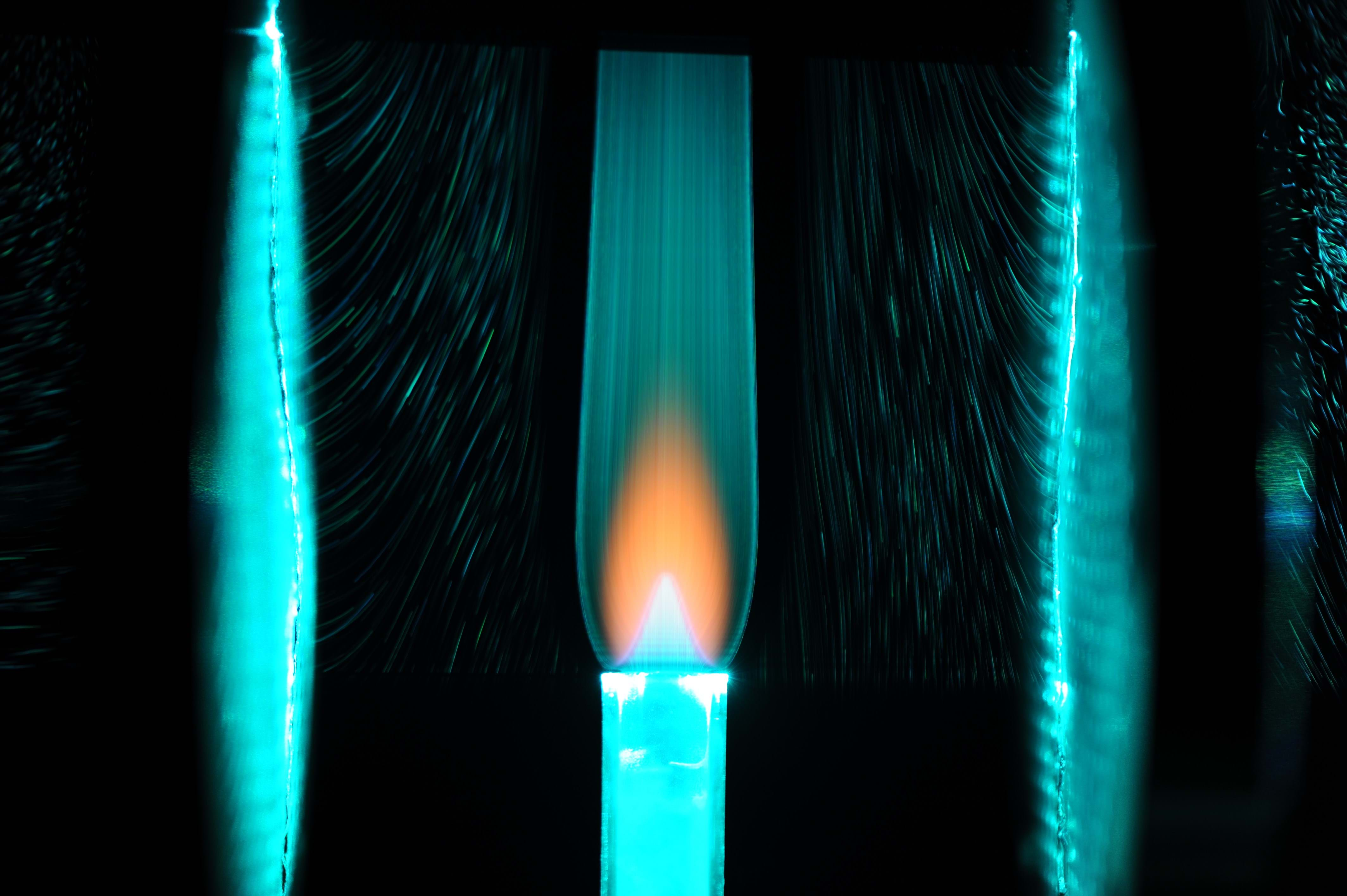
Jet flame’s natural flow structure without electric field
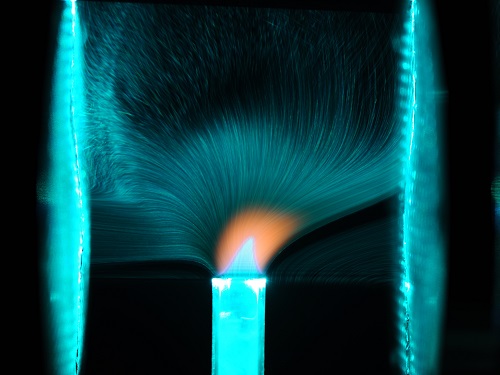
Jet flame affected by a 16 kV electric field between two electrodes
This visualisation was enhanced in quality by adding reflective seeding particles made from titanium oxide and oil to the flame.
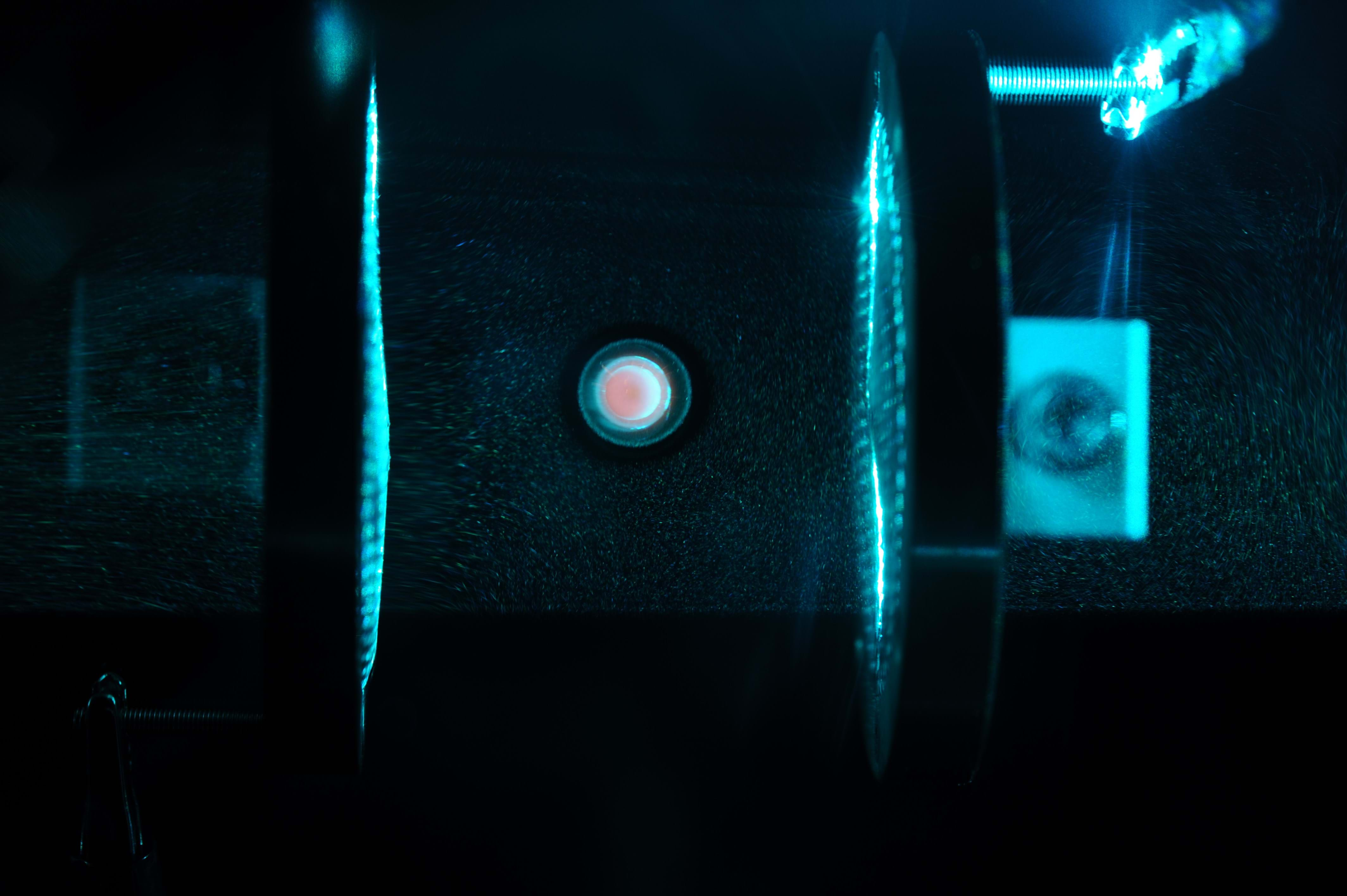
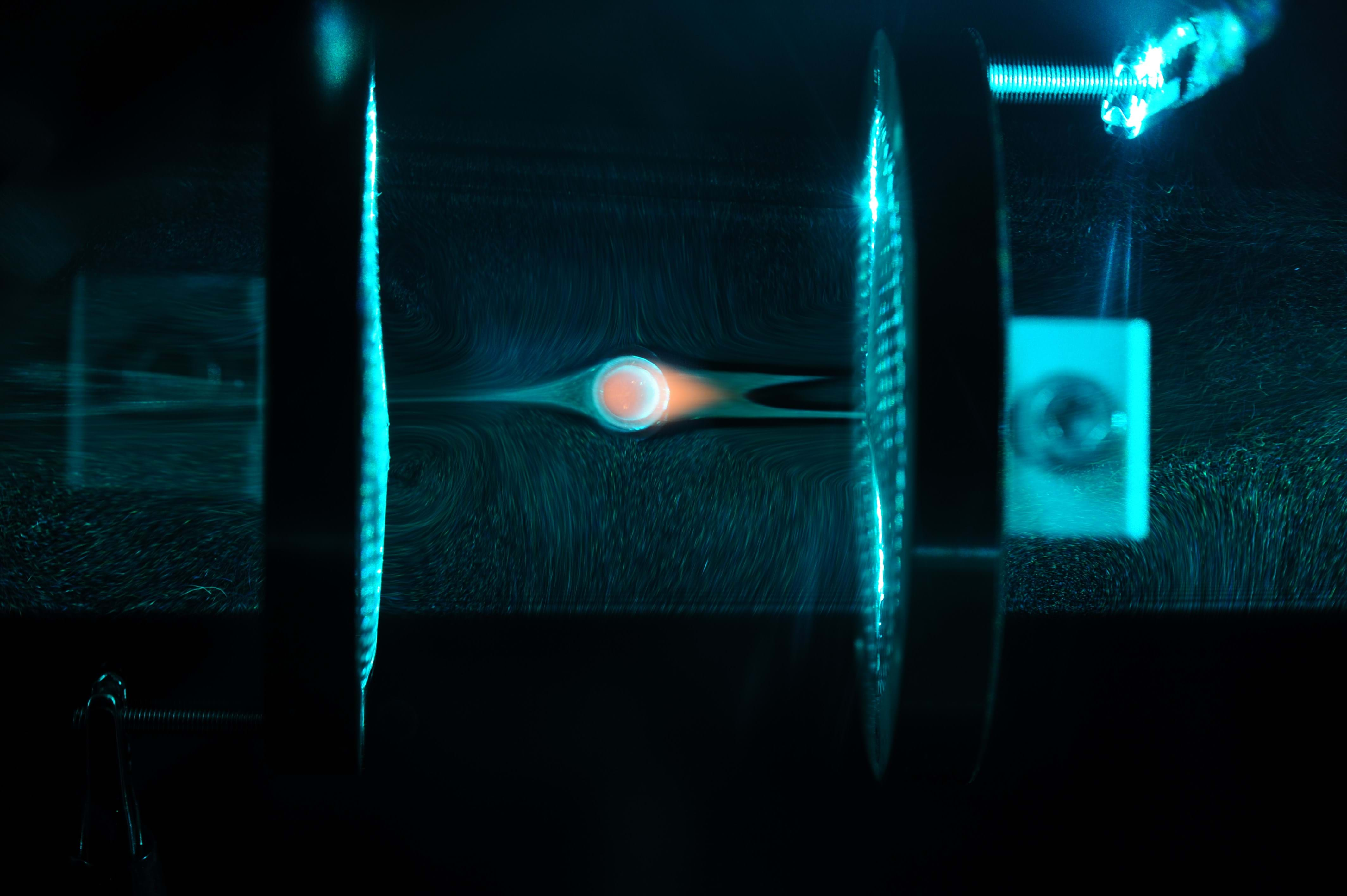
A top-down view of the jet flame with and without an electric field applied
The researchers found that when a DC field was applied, the flame bent towards the negative electrode, while the ionic wind blew toward both electrodes. In an AC field, the ionic wind dynamics depended on the applied AC frequency – although this was only the case at low frequencies.
The authors of the research, which was published in Combustion and Flame,believe that this work could have a positive impact on the future design of flame-generating machinery. Importantly, they also believe that applying it wouldn’t require the building of completely new industrial equipment.
Cha said: “The beauty of this method is that it can be retrofitted – it can be added in as an active control method for any pre-existing combustion system.
“Depending on the system configuration and the type of combustion that we need to control, we could use our knowledge and understanding to work out the appropriate locations of electrodes and choose the best operational parameters, such as voltage or frequency.”
Combustion and Flame: http://doi.org/gbvjvt
Read this article on thechemicalengineer.com where it was originally published.